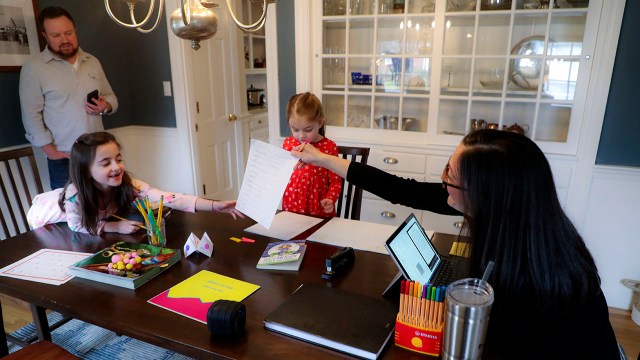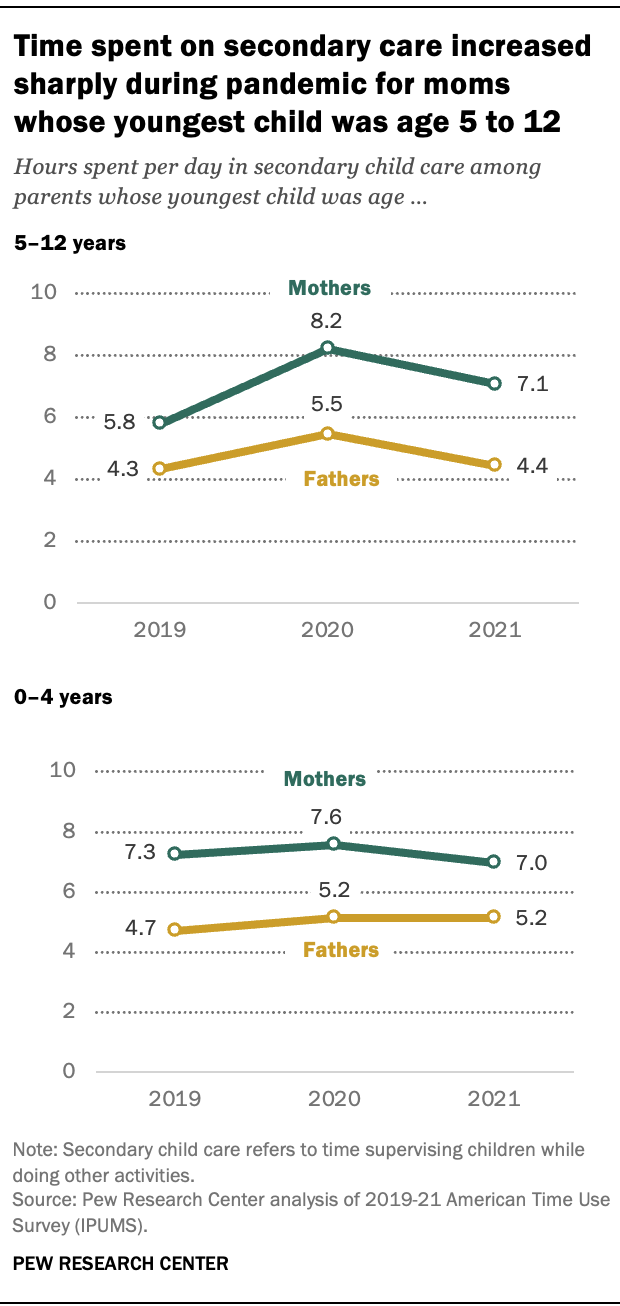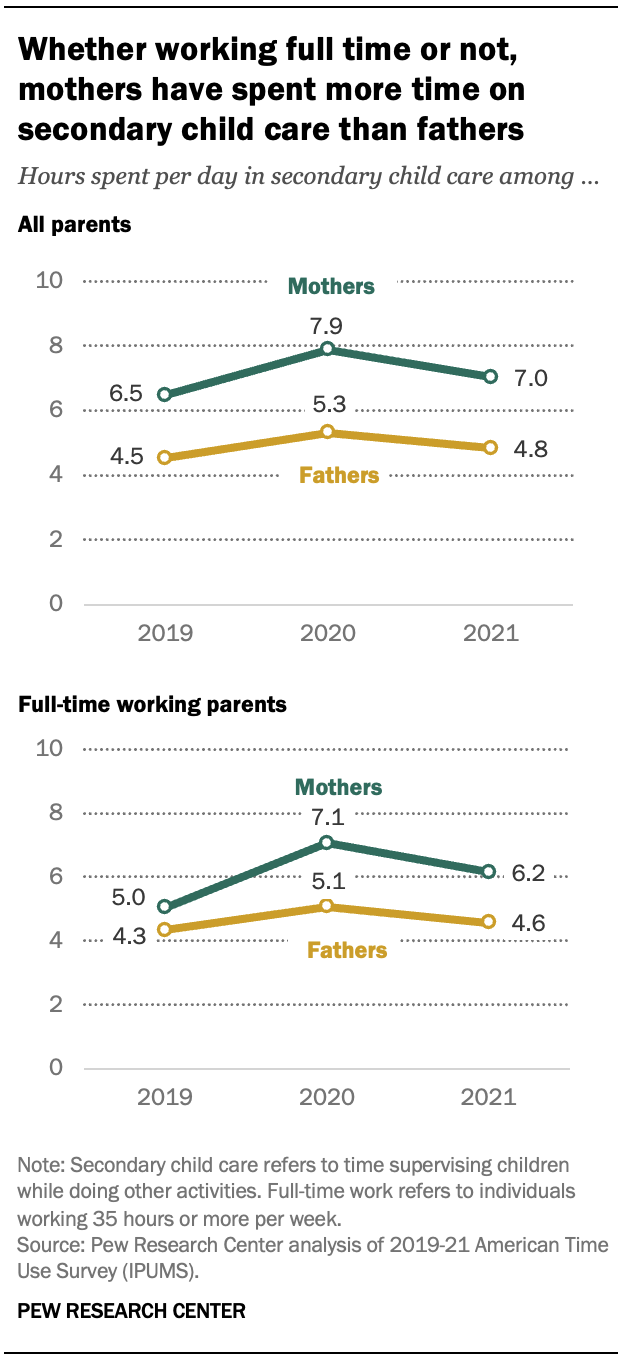
The coronavirus pandemic created widespread child care challenges in the United States in 2020. Those difficulties lasted into 2021 for some parents, according to a new Pew Research Center analysis of government data examining the way parents spent their time before and during the outbreak.
While there was relatively little change in the amount of time parents spent directly caring for their children between 2019 and 2020, the time they spent on secondary child care – that is, supervising their children while doing other things, such as working, doing chores or watching television – went up significantly.
And the increased time commitment on secondary care persisted into 2021 for one group of parents in particular: mothers with children ages 5 to 12, according to the analysis, which looks at time use data covering the 2019-2021 period.
This Pew Research Center analysis is based on data from the American Time Use Survey covering the 2019-2021 period and conducted by the Bureau of Labor Statistics (BLS). Microdata used in this analysis comes from the Integrated Public Use Microdata Series (IPUMS) provided by the University of Minnesota.
The analysis focuses on the time married and partnered parents spent on secondary child care, which the BLS defines as times when parents had at least one child under age 13 in their care while doing activities other than primary child care.
The sample used in this analysis includes married and partnered parents with minor children living in the household. Because secondary care is only reported for children under 13 years old, we only carry secondary care estimates for parents whose youngest child is younger than 13 years old. Full-time working parents are individuals working 35 hours or more per week. Finally, because American Time Use Survey data collection was interrupted during part of the first semester of 2020, we only use data from the second half of 2019, 2020 and 2021.

For mothers whose youngest child was age 5 to 12, average time spent on secondary care increased by about 2.5 hours from 2019 to 2020, from an average of 5.8 to 8.2 hours a day, before dipping to an average of 7.1 hours a day in 2021. The 2021 average was still considerably higher than before the onset of the pandemic, even as other aspects of life began to normalize in the outbreak’s second year.
Mothers with a youngest child age 4 or younger, by comparison, didn’t see a statistically significant increase in the time they spent on secondary child care in the 2019-2021 period.
As has long been the case, there are sizable gender differences in the amount of time that parents spend on child care. These patterns continued in 2020 and 2021, with fathers spending considerably less time than mothers on both primary and secondary child care.
Among fathers with a youngest child age 5 to 12, time in secondary care increased 1.2 hours from 2019 to 2020. However, for fathers whose youngest child was 4 or younger, time in secondary child care remained stable in this time span.
As a whole, parents with children younger than 13 saw an increase in time spent on secondary care in the first year of the pandemic. In 2019, fathers with children 12 or under spent an average of 4.5 hours on secondary child care. Fathers’ time increased to 5.3 hours in 2020 and then moved to an average of 4.8 hours in 2021. On average, moms spent 6.5 hours per day on secondary care in 2019, 7.9 hours in 2020 and 7.0 hours in 2021.

Overall, full-time working parents spent less time on secondary child care than parents who do not work full time. For full-time working fathers, the amount of time spent providing this type of care stayed relatively stable from 2019 to 2020 and again from 2020 to 2021. Full-time working mothers, on the other hand, saw an increase during the first year of the pandemic (from an average of 5.0 to 7.1 hours per day) and then a trend back down in 2021 (an average 6.2 hours).
For many employed parents, the shift to remote work – along with interruptions in day care and schooling – likely contributed to the increased time they spent during the pandemic on secondary child care.
Other research has shown an increase in the amount of time mothers spent working while supervising their children in the first year of the pandemic, and the gender gap between mothers and fathers in this type of time use became considerably wider. These overlapping demands may help account for the added burden mothers have experienced over the past few years.
